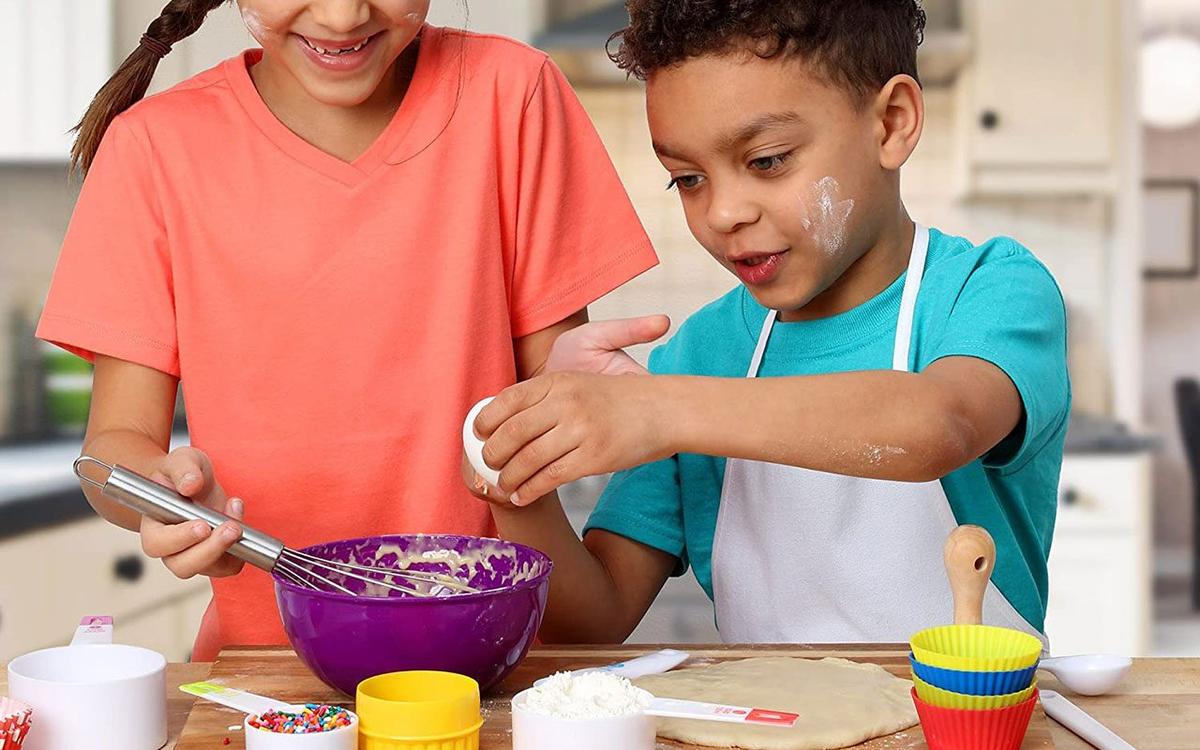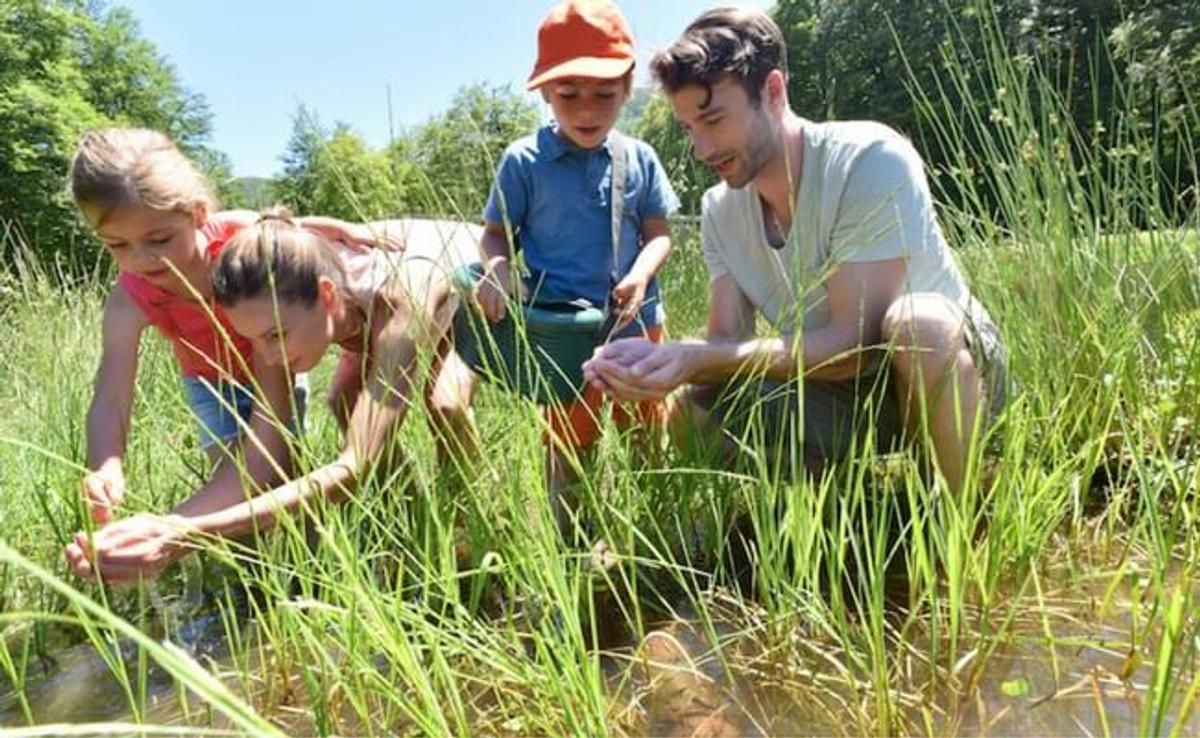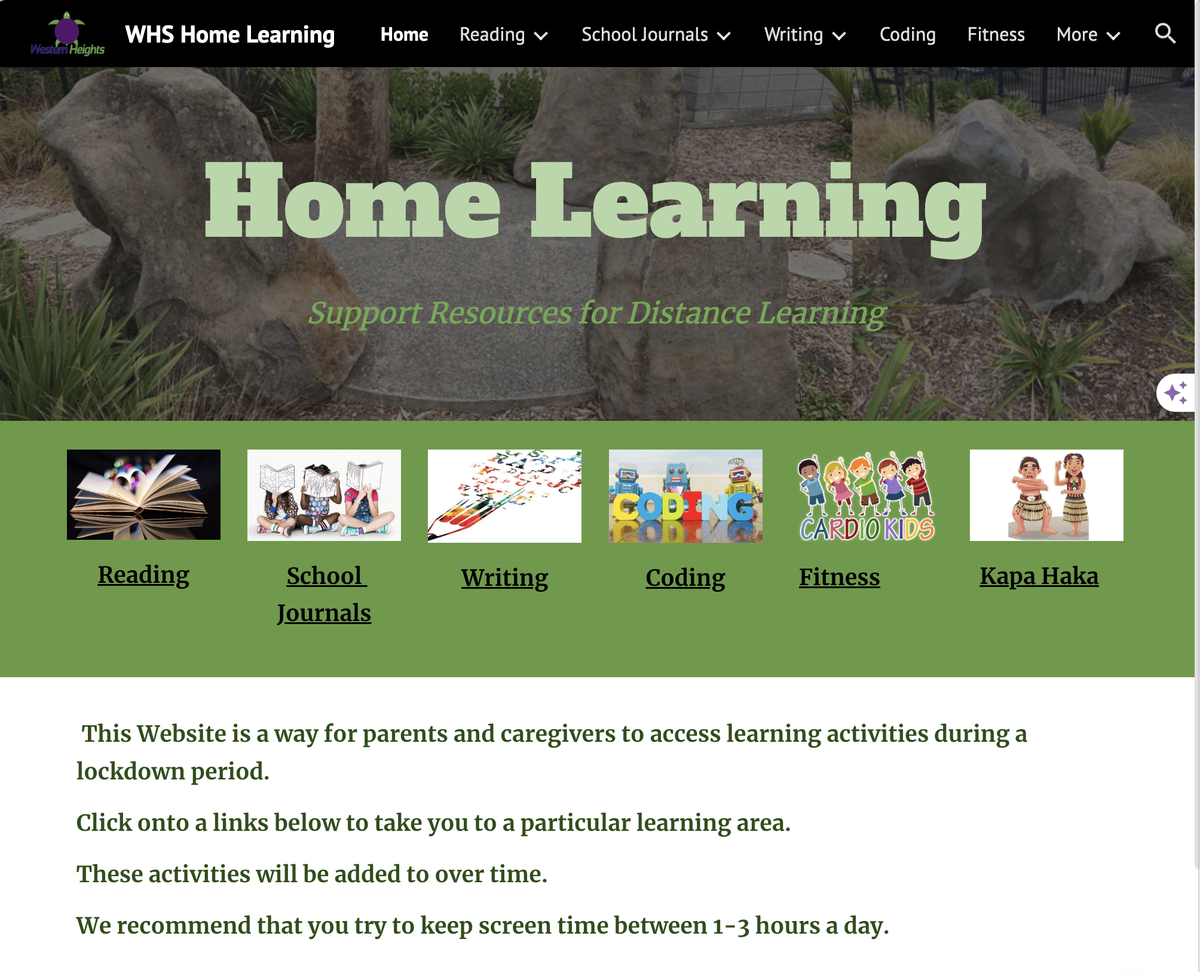Learning at Home Options:

1. Reading Together
- Activity: Set aside time each day for reading together. Let your child choose the books, fostering a sense of independence and interest in the stories.
- Learning Benefit: Enhances vocabulary, comprehension, and love for reading.
2. Cooking and Baking
- Activity: Involve your child in cooking or baking simple recipes. This can be an opportunity to measure ingredients together, discuss the science of cooking, or explore cuisines from different cultures.
- Learning Benefit: Teaches math through measurement, introduces scientific concepts, and broadens cultural awareness.
3. Nature Walks and Scavenger Hunts
- Activity: Go on nature walks or create a scavenger hunt in your backyard or local park. Make a list of things to find or observe, such as different types of leaves, insects, or birds.
- Learning Benefit: Encourages observational skills, teaches about the natural world, and promotes physical activity.
4. Art and Craft Projects
- Activity: Engage in art and craft projects using recycled materials or nature finds. Encourage creativity by not setting too many rules.
- Learning Benefit: Develops fine motor skills, creativity, and environmental awareness.
5. Board Games and Puzzles
- Activity: Play board games and puzzles as a family. Choose games that are age-appropriate and challenge the child in fun ways.
- Learning Benefit: Teaches problem-solving, strategic thinking, and social skills like taking turns and sportsmanship.
6. Science Experiments
- Activity: Conduct simple science experiments at home using household items. There are many resources online for safe and easy experiments that require little preparation.
- Learning Benefit: Introduces basic scientific concepts, encourages curiosity, and develops analytical skills.
7. Gardening
- Activity: Start a small garden or even a windowsill planter. Involve your child in the planting process, and teach them about the growth cycle of plants.
- Learning Benefit: Teaches responsibility, patience, and basic biology.
8. Music and Dance
- Activity: Have a music and dance session where everyone takes turns choosing songs. Try to include music from different genres and cultures.
- Learning Benefit: Encourages musical appreciation, physical activity, and cultural exposure.
9. Storytelling and Writing
- Activity: Create a family storytelling time where each person can tell a story or contribute to a family story. Alternatively, encourage your child to write or illustrate their stories.
- Learning Benefit: Enhances creativity, writing skills, and oral communication.
10. Virtual Museum Tours
- Activity: Explore virtual tours of museums around the world. Discuss the art, history, or science behind the exhibits you visit.
- Learning Benefit: Provides exposure to global cultures, history, and art, fostering a sense of curiosity and appreciation for diversity.
Integrating these activities into your family routine makes learning an enjoyable and enriching experience beyond the classroom. The key is to follow your child's interests and inclinations, ensuring that these experiences remain engaging and stress-free.
From Our Perspective:
Our children have access to our school's Reading Eggs subscription, which costs nearly $10,000 per year, so we want it to be well used.
Basic Facts are a great option. There is no substitute for having fast and accurate recall of multiplication tables and addition and subtraction facts.
Singing these, having family beat-the-buzzer fact challenges, etc., can make this learning fun. Placing a chart on the ceiling or on the toilet door can also help make it a focus.
We still have our Covid Home Learning site available at
https://sites.google.com/westernheights.school.nz/whshomelearning/home











